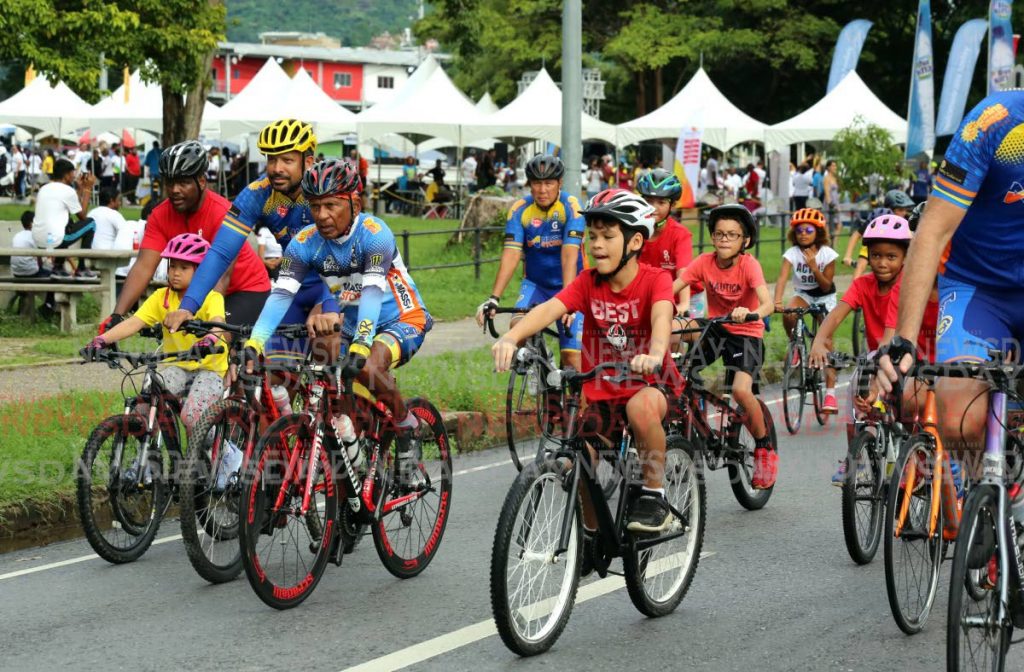The Ministry of Work’s need for speed

On returning home, after a run one Saturday morning, I glanced at my Facebook feed, only to see that a car had just lost control near to the Lady Chancellor Hill and crashed into a railing on the pitch walk around the perimeter of the Savannah.
I have long felt a sense of discomfort running along stretches of the northern and eastern sides of the Savannah. In these places, there is absolutely nothing preventing a car from crashing into those sitting, walking, or running. At some points, the level of the pathway is even below that of the road, with large SUVs, pickups, and trucks driving by at deadly speeds.
I was therefore astonished to see that decision-makers at the Ministry of Works have raised the speed limit around the Savannah from 50 kph to 65 kph. I wonder if these purveyors of the public interest were ever taught that speed kills.
They certainly got that memo in New York City. The West Side Highway (WSH), which runs along the western waterfront of Manhattan, functions very much like Wrightson Road, acting as something of a bypass road for the city. Two months ago, the WSH saw a decrease in speed limit from 35 mph (56 kph) to 30 mph (48 kph). In contrast, earlier this year, Wrightson Road’s speed limit was increased to 65 kph.
Why would an incredibly congested place, and the most densely populated county in all of the US, go to the effort of reducing the speed limit on a major, strategic eight-lane arterial by 8 kph? The answer can be found in the city’s response to why it also dropped the citywide default speed limit to 25 mph (40 kph): “NYC is reducing its speed limit to 25 mph in order to make the city safer for pedestrians, cyclists, and drivers and help meet the city’s goal of bringing traffic fatalities to zero. Data shows that driving at or below 25 mph improves drivers’ ability to avoid crashes. Pedestrians struck by vehicles travelling at 25mph are half as likely to die as those struck at 30mph."
A report from the US National Association of City Transportation Officials found that as impact speed increased from 48 kph to 64 kph, risk of pedestrian fatality was 3.5 to as much as 5.5 times higher, depending on considerations like age, gender and biomechanical tolerance of the pedestrian, and other factors.
Has the Ministry of Works considered the vulnerable elderly citizens of this country who utilise the perimeter of the Savannah for recreation and exercise? How about the parents talking a stroll with their young children, or pushing toddlers in strollers? What happens if a car, driving at a legitimised 65kph, were to run into these people?
Data tells us that the risk of death could be anywhere from 30 to 90 per cent, depending on who the victim is.
This area is certainly not free from accidents; in fact, quite the contrary. I have seen numerous accidents with my own eyes, and have even witnessed more than one pedestrian fatality.
On hearing the news of the new speed limit, I reached out to a colleague with decades of experience in the transportation field, who remarked that some of the Savannah lanes are too narrow for the higher speed, and that there is a high degree of pedestrian movement in that area.
Exactly who, then, is advising the ministry in its “need for speed” thrust? They do not appear to understand the complexity of the urban eco-system.
By focusing on moving cars at high speeds through urban areas, an inconvenient side effect arises. Non-automobile modes of transportation become less safe and desirable, and people who may have chosen to walk or ride a bicycle for short trips will increasingly choose to drive, further congesting the very roadways and further frustrating the very drivers whom the myopic policies were aimed at placating in the first place.
Not that increasing speed limits relieves congestion in the first place. In fact, it can do the opposite, as a highly-regarded local transportation engineer made clear at a symposium at UWI earlier this year.
Arrive Alive TT was equally dismayed, remarking on social media that, “All over the world most especially, around schools and neighbourhoods, speed is being decreased due to vulnerable road users like pedestrians and cyclists, and in this country we are raising speed limits at a time and during a year when we have had an increase in deaths!”
This short-sighted mentality represents a costly approach to development that was tried and failed spectacularly in cities all across the developed world, but particularly in North America. Many of these places are going all-out to rectify these mistakes by pursuing a path of traffic- and speed-calming, and prioritising pedestrians, cyclists, and public-transit users.
We, of course, continue to think that it is our divine right and destiny to replicate these failures, ironically, in the name of progress.
Ryan Darmanie is a professional urban planning and design consultant, and an avid observer of people, their habitat, and the resulting socio-economic and political dynamics. You can connect with him at darmanieplanningdesign.com or e-mail him at ryan@darmanieplanningdesign.com


Comments
"The Ministry of Work’s need for speed"